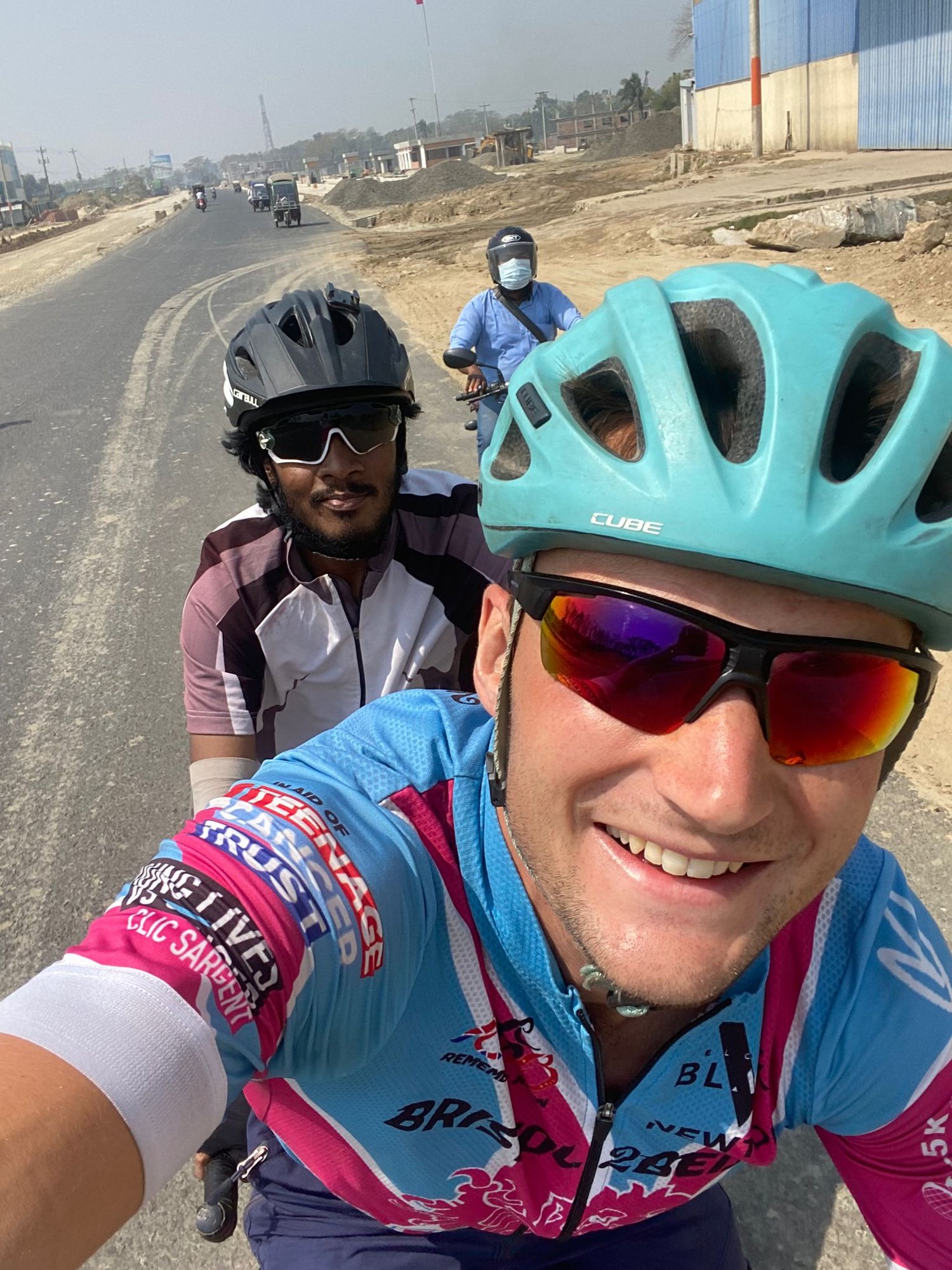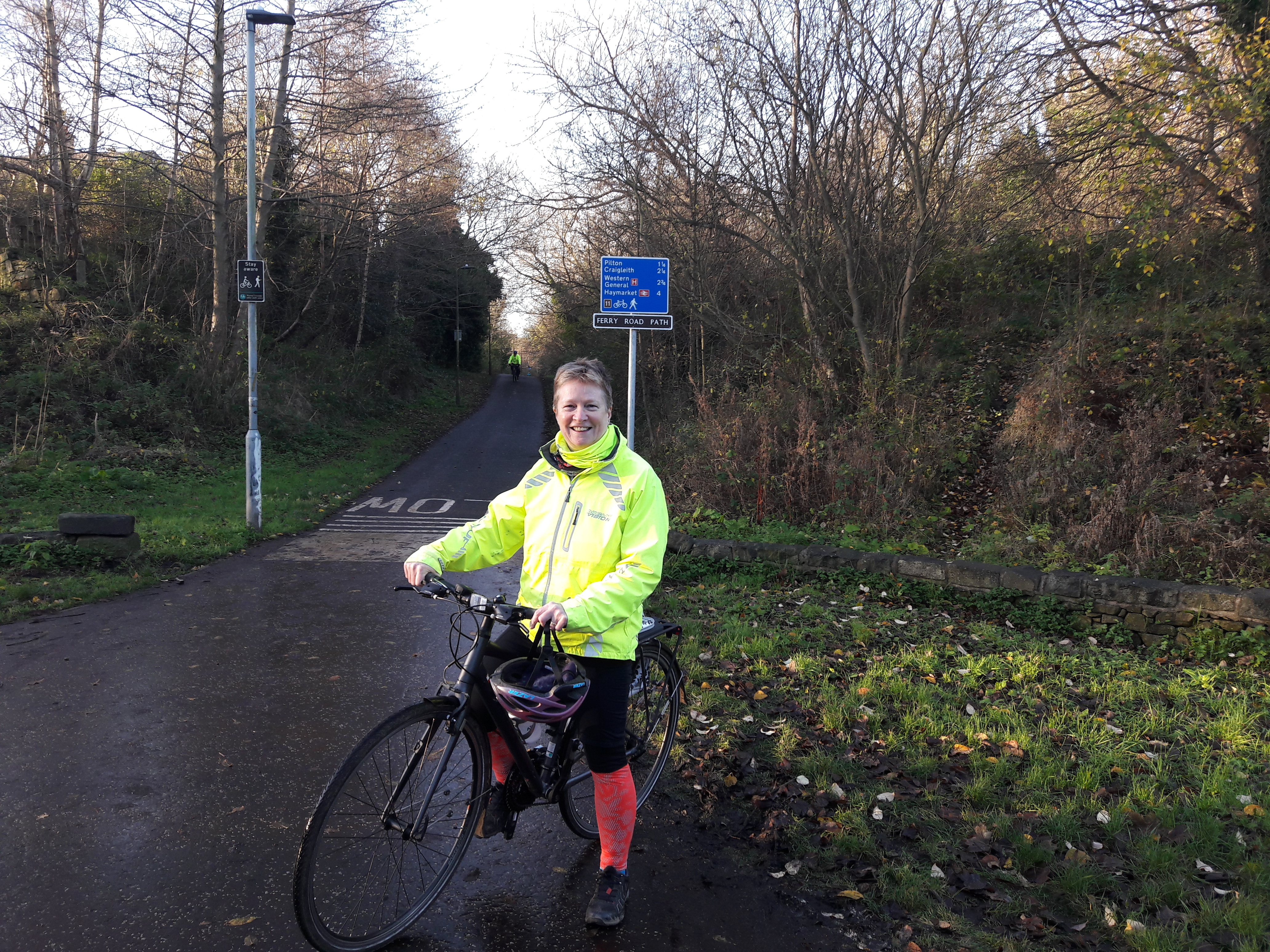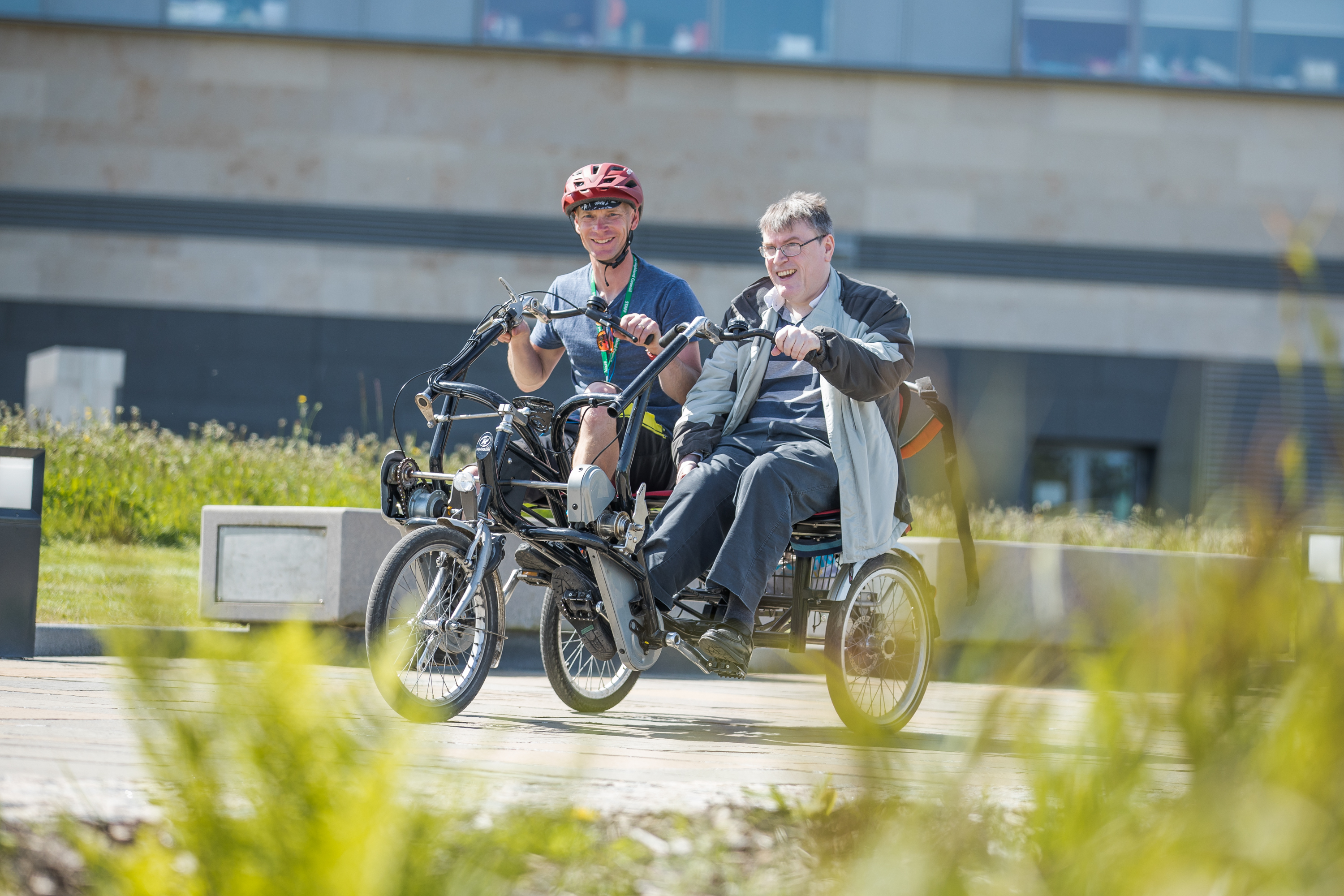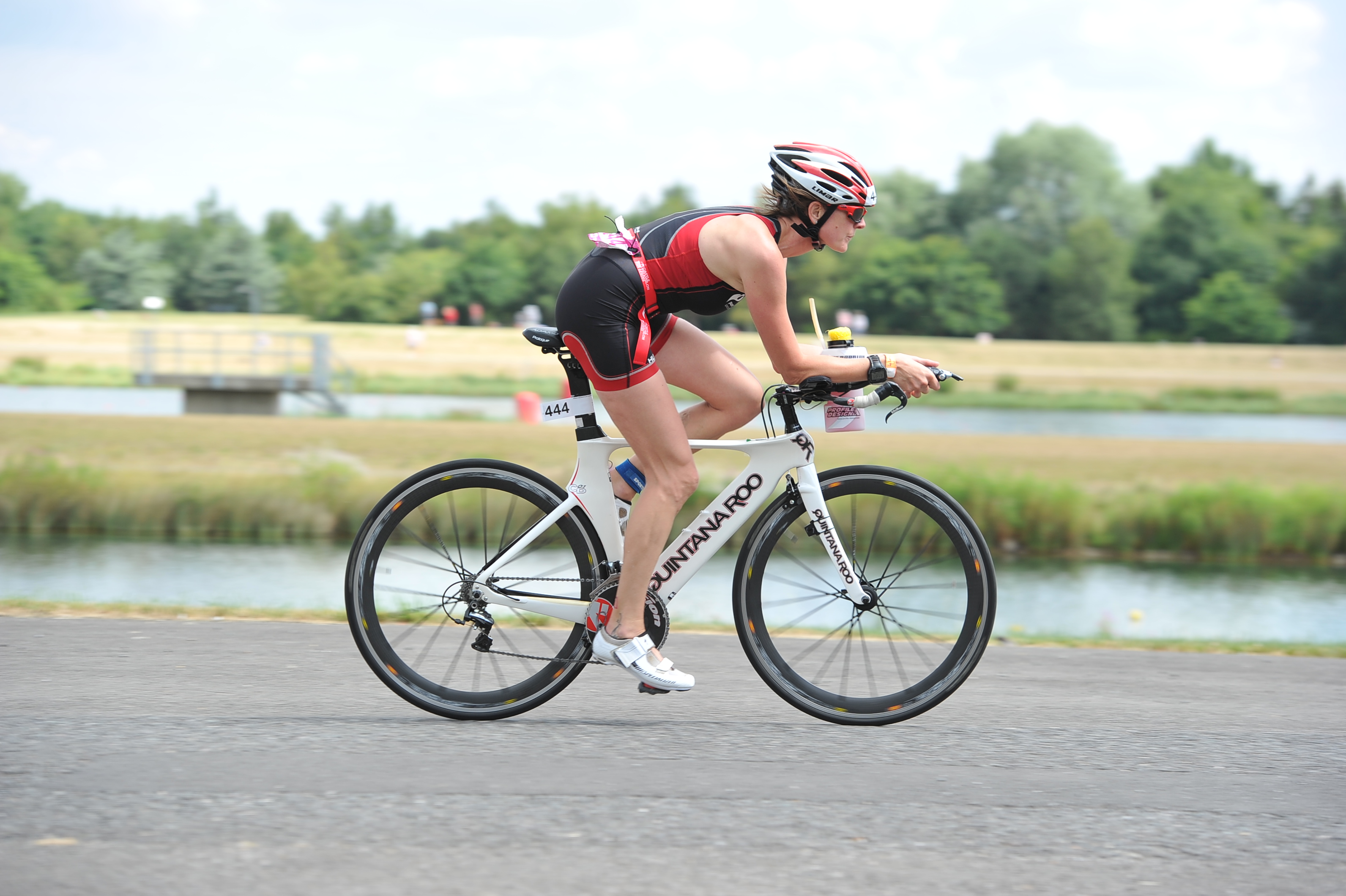Can you still cycle with cancer?

A cancer diagnosis is something many of us face. Findings by Cancer Research UK show that there were 375,400 new cases every year in 2016-18. That’s more than 1,000 every single day. It means that every two minutes someone in the UK is diagnosed with cancer.
We all know that staying fit and healthy can help reduce your risk of cancer, but what about staying active while you’re undergoing treatment? Even regular cyclists might feel intimidated by the idea of getting on their cycles in the face of a cancer diagnosis, while those who only cycle occasionally might be tempted to give up on it entirely.
But this might not be such a good idea. Everyone I spoke to agreed that it’s important to stay active when living with cancer – so long as you can do so safely. So first a disclaimer: this article is for advice only and you should always consult your doctor before embarking on any exercise programme.
This is echoed by Cancer Research UK’s Alice Wilson, who said: “We would always advise anyone undergoing cancer treatment to check it out with their cancer care team before they take on any activity to make sure it is safe to do so.”
Why you should stay active
Remaining active while undergoing cancer treatment has all the same benefits as being active while healthy. It maintains your health and fitness and improves your mental wellbeing.
But exercise also has benefits specific to those on treatment, so much so, in fact, that cancer support charity Macmillan has described it as the “underrated wonder drug”. The organisation has even launched its Move More service, in collaboration with the NHS, helping patients to get more active.
Physical activity can help manage some cancer-related side effects, such as reducing fatigue, reducing stress and anxiety, improving depression, improving bone density and heart health, and maintaining muscle strength.
According to the NHS, exercise can help with several side effects of both chemotherapy and radiotherapy. These include tiredness, joint and muscle stiffness, the risk of lymphoedema (when the lymphatic system becomes damaged and can no longer prevent fluid building up in the body) and stress, anxiety and depression.
You’ll be better able to tolerate any surgery. You’ll also lower your chances of developing other health problems, such as high blood pressure, heart disease, kidney disease, diabetes or stroke. You’ll be helping to improve your quality of life and increasing your life expectancy.
Helen Murray is a cancer rehabilitation specialist for MOVE charity. The organisation aims to help and inspire those affected by cancer, through an online programme for 13-30 year olds anywhere in the UK, 5KYW – a support group linked to local Parkruns – and educational resources, including the MOVE Against Cancer podcast.
She said: “You should always speak to your doctor and there are certain cancers and side effects of treatment that might rule out cycling, but in general exercise before, during and after treatment has been shown to be safe and beneficial to people affected by cancer.”
In 2018 Luke Grenfell-Shaw was diagnosed with Stage IV cancer; he was just 24. The prognosis wasn’t good; the cancer had already metastasised to his lungs. He was, he says, “in shock, bewildered, angry”.
But he didn’t give up. Luke was a keen cyclist and runner, planning on cycling around Central Asia.
“Exercise releases endorphins, which improves mood, often drastically,” Luke says. “Even before I had cancer, I got pretty cranky without going for a run or cycle – just ask my parents or my girlfriend.
“For CanLivers, facing the huge, life-altering, and extremely difficult challenge that is cancer, the role of exercise as a powerful mood-lifter cannot be over-emphasised.”
CanLiver is Luke’s term for those living with cancer; he dislikes the phrase ‘cancer survivor’. He decided he was going to cycle from Bristol to Beijing on a tandem he named Chris, starting out on January 2020. Now 28, Luke has completed his challenge (although in a somewhat truncated version due to coronavirus lockdowns). Following his diagnosis, he hadn’t expected to see his 25th birthday.

How to stay active
During and just after cancer treatment, you’re likely to feel fatigued and may experience pain or discomfort. It’s easy to get discouraged and give up cycling, but this isn’t the best idea. You’ll become weaker and less fit and find it even harder to get back into exercise. One thing we do know is that being inactive isn’t healthy.
The trick is to take things easy. This is about maintenance, rather than training for that 100-mile sportive. If you were already a regular cyclist prior to diagnosis, then aiming to keep this up is your best bet.
You’re much more likely to continue exercising if you enjoy it. So don’t overdo things and don’t put pressure on yourself. If you genuinely don’t feel like going out on your bike one day, it’s fine to give yourself a day off.
Helen Murry again: “If you were a cyclist before your diagnosis, then you can continue to cycle during treatment. It’s advised that you maintain your current fitness while you are on treatment, rather than try to increase your fitness. It’s better to be consistent, rather than go hard one day and wipe yourself out for five days with fatigue.
“Luke Grenfell-Shaw used to take his turbo trainer into hospital and cycle while on chemotherapy, and while that’s not for everyone, being fit helped Luke mentally and physically through his treatment.”
Be prepared to adapt your cycling. Long club rides might be off the agenda, so try working with other group members to offer shorter, more manageable rides – preferably with a rest stop at a cycle-friendly café.
If you got in most of your miles while cycle commuting, and you’re currently unable to work due to treatment, try a ‘virtual’ commute. This involves heading out on a circular ride at the beginning of the day, as if you were cycling to work. It was championed by cycle commuters working from home during lockdown who missed their morning ride.
How to become more active
For anyone who wasn’t active prior to diagnosis, improving fitness will be hugely beneficial. It’s vital to start slowly and gradually increase activity levels. Cycling can be particularly good for this as it’s easy to incorporate it into your day.
“If you didn’t do any exercise before your treatment, then you can still cycle during it, but check with your medical team and start off slowly, by just doing a little amount at a time,” suggests Helen Murray.
“You could start off with 10 minutes every other day, at an effort level that would enable you to still have a full conversation with someone. You could go for a short walk on the days that you’re not cycling and then gradually build up from there.”
One good idea is to ask your GP or cancer treatment team if there are any local organised activities, such as led rides. These will be pitched at a suitable effort level and give you the opportunity to meet others in your situation.
You can easily incorporate short rides into your day by cycling to the shops or a local coffee shop, or to see friends. Swap short car journeys or public transport for the bike. If you lack motivation, cycling with friends or family or joining a local club will help.
It’s all about small steps, so set yourself some achievable goals. Start at a level that suits you and don’t be over-ambitious. Then gradually build up your level of activity, increasing length and intensity. It might help to have short-term, medium-term and long-term goals: ‘On Saturday I will cycle for 10 minutes’; ‘In three weeks’ time I will cycle for 20 miles’; ‘In eight weeks I will cycle every day’.
Record your efforts in an activity diary. This will help you track your progress and stay motivated. It can also help you ensure you’ve set the right goals – change them if they are too challenging or not challenging enough. Remember to reward yourself when you achieve your goals.
All the above will also help anyone who was previously a regular cyclist. If you’ve found motivation lacking since your diagnosis, try one or more of these tips and you might find yourself out on your bike before you know it.
Why cycling?
Any exercise while undergoing cancer treatment is highly recommended, but there are particular benefits to cycling.
It’s one of the best aerobic activities around – simple yet effective and accessible to most people so long as they have a suitable cycle. You don’t need any special kit or clothing – just a water bottle and something comfortable to wear. Although there is plenty of gear out there for those who want to invest in it!
You are very much in control when it comes to time and intensity. Anything from a five-minute slow cycle to a local café to long ride in hills is possible, making it easy for you to adapt to your own particular needs and fitness level.
It promotes overall fitness and weight loss. It’s good for the heart and cardiovascular system, as well as building lung capacity. It can also help strengthen your immune system.
According to Macmillan, for people with painful joints, regular cycling can help ease pain by building muscle strength and improving flexibility. Helen Murray adds: “As it’s a low-impact activity, it’s a great option if you have any joint issues as a side effect of treatment.”
Cycling is an excellent option for anyone with low immunity due to treatment, who, according to Cancer Research UK, should try to avoid exercising in public gyms. “Cycling, whether outside or at home on a static trainer, is great if you can’t get to the gym because your immune system is compromised due to treatment,” says Helen.
“If your balance, eyesight or nerves have been damaged by treatment and you love cycling, don’t rule out an indoor trainer as it means you can still be on a bike – and stay safe – without the risk of falling.”
There’s also the mental wellbeing aspect. In addition to the exercise-induced endorphins improving your mood, there are particular benefits to exercising outside. Exposure to natural light tops up vitamin D levels, while being outdoors – especially in nature – provides increased stress reduction, and better levels of self-esteem and perceived health.
And finally, as Helen says: “It’s social! Nothing beats a good chat at a café stop with a friend.”






